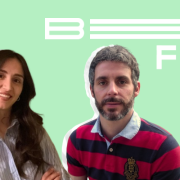Improving flexibility markets and prosumers engagement
Article by Giorgia Lattanzio and Marco Rossi, from Ricerca sul Sistema Energetico (RSE S.p.A)
The objective of a carbon neutral Europe in 2050 has unleashed a steep increase of renewable energy production, a kind of energy characterized by volatility and unpredictability. To comply with these characteristics, the energy system is becoming more flexible exploiting a coordinated exercise between production and consumption. Those units able to provide flexibility to manage loading/voltage congestions are mostly connected to distribution grid, thus the new electric system leverages on the possibility, not only for DSO, but also for TSO to rely on distribution resources. Therefore, DSO are assuming two different new roles: buyers of flexibility services and neutral facilitators to allow TSO the procurement of global services. Here the necessity of a coordination between TSO and DSO arises: how to efficiently use flexible and shared resources?
BeFlexible’s pilot in Italy
In Italy, pilot projects have been launched to introduce the procurement of flexibility services for DSO. BeFlexible collects the experience from two of them: EDGE by E-Distribuzione and RomeFlex by Areti. Different procurement approaches have been defined and will be tested in 2024:
- EDGE considers the use of long-term contracts to procure flexibility and a real-time activation when services are needed.
- RomeFlex considers long-term contracts and short-term markets, where qualified service providers can offer flexibility services.
In the meantime, the Italian TSO Terna developed the Dynamic Traffic Light Mechanism: a coordination architecture that allow DSO to update grid constraints relatively to the maximum allowed flexibility volume on a certain grid portion. DSO can specify the network status by means of the traffic light concept: when the DSO observes that the modulation of a flexible unit could produce critical conditions, DSO will associate a colour and the capability to each pre-defined grid portion.
To optimize the overall system costs, the possibility of service providers to participate to the provision of both global and local services (to TSO and DSO respectively) is fundamental because market liquidity would increase and so does competitivity. However, the definition of a market coordination is necessary in such context. For this reason, in the BeFlexible South-Mid demo a possible coordination scheme concerning how to select shared resources is defined and tested. A well-functioning scheme should be able to give valuable economic benefits reducing grid reinforcement costs which then pass on consumers bills, assuring distribution and transmission network stability and contributing to reach the objective of the energy transition (environmental values). To promote a smart use of the energy system means to reduce network issues at small costs; a target which can be achieved more likely when consumer engagement and energy awareness of final users (social values) are empowered. Furthermore, comfort and convenience values for users are fundamental to allow the overall system to sustain itself: for example, if enabling processes for the provision of services are facilitated and unified/standardized, the effort required to service providers is reduced, thus comfort increases, and a greater number of flexibility markets participants is expected. This would contribute to further increase competitivity with the consequence of minimizing costs.

Conclusive remarks
The first task of the South-Mid demo analyses the concept of a coordination mechanism looking at market and technical aspects. The Crowd Balancing Platform is presented as a single-entry point to facilitate access to the service provision, and a coordination mechanism is defined looking at the different procurement phases: registration, prequalification, market and monitoring and activation phases. Expected benefits are pointed out looking at all the previously delineated values.
This article summarizes key takeaways from Deliverable 4.1, titled “DEMO 1 Methodological report.” To access the complete document, please click here.
Stay tuned about BeFlexible by following us on LinkedIn and Twitter!

